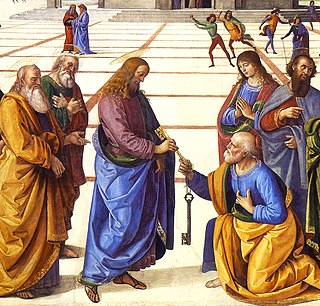 W
WThe captain general of the Church was the de facto commander-in-chief of the armed forces of the Papal States during the Middle Ages. The post was usually conferred on an Italian or other noble with a professional military reputation or (later) a relative of the pope.
 W
WTaddeo Barberini (1603–1647) was an Italian nobleman of the House of Barberini who became Prince of Palestrina and Gonfalonier of the Church; commander of the Papal Army. He was a nephew of Pope Urban VIII and brother of Cardinals Francesco Barberini and Antonio Barberini. Thanks to their uncle's famous nepotism, the brothers shaped 17th-century Italian politics, religion, art, music and architecture.
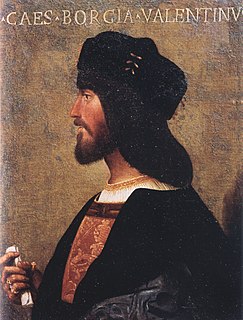 W
WCesare Borgia was an Italian cardinal and condottiero of Aragonese (Spanish) origin, whose fight for power was a major inspiration for The Prince by Niccolò Machiavelli. He was an illegitimate son of Pope Alexander VI and member of the Spanish-Aragonese House of Borgia.
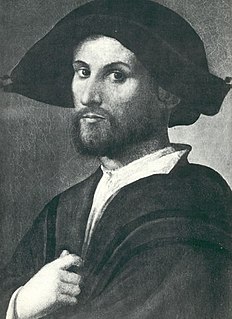 W
WGiovanni Borgia, 2nd Duke of Gandía was the son of Pope Alexander VI and a member of the House of Borgia. He was murdered in 1497. He was the brother of Cesare, Gioffre, and Lucrezia Borgia. Giovanni, commonly known as Juan, is believed to be the eldest of the Pope's four children by Vannozza dei Cattanei, but this is disputed. Due to the contents of a number of papal bulls issued after his murder, it is unclear whether Giovanni was born in 1474 or 1476.
 W
WBraccio da Montone, born Andrea Fortebraccio, was an Italian condottiero.
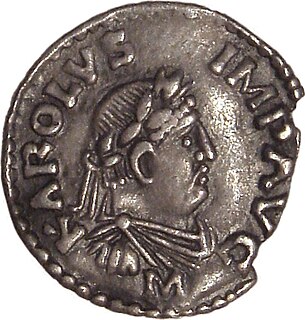 W
WCharlemagne or Charles the Great, numbered Charles I, was King of the Franks from 768, King of the Lombards from 774, and Emperor of the Romans from 800. During the Early Middle Ages, Charlemagne united the majority of western and central Europe. He was the first recognized emperor to rule from western Europe since the fall of the Western Roman Empire around three centuries earlier. The expanded Frankish state that Charlemagne founded is known as the Carolingian Empire. He was later canonised by Antipope Paschal III.
 W
WJacques Cœur was a French government official and state-sponsored merchant whose personal fortune became legendary and led to his eventual disgrace. He initiated regular trade routes between France and the Levant. His memory retains iconic status in Bourges, where he built a palatial house that is preserved to this day.
 W
WMarcantonio II Colonna, Duke of Tagliacozzo and Duke and Prince of Paliano, was an Roman aristocrat who served as a Viceroy of Sicily in the service of the Spanish Crown, Spanish general, and Captain General of the Church. He is best remembered for his part as the admiral of the Papal fleet in the Battle of Lepanto.
 W
WFranceschetto Cybo was an Italian nobleman, noteworthy for being the illegitimate son of Pope Innocent VIII. Later naturalized by his father into becoming his legitimate heir, Franceschetto was infamous for his gambling addiction and wanton spending of the Papal treasury for various pleasures and scandals. He is otherwise noteworthy for his political marriage to Maddalena de Medici, and their offspring formed a dynastic lineage that persists in the nobility of Europe until today.
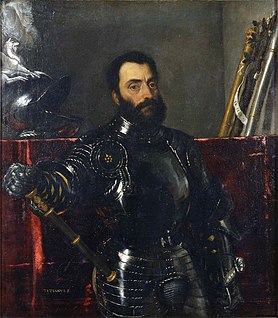 W
WFrancesco Maria I della Rovere was an Italian condottiero, who was Duke of Urbino from 1508 to 1516 and, after retaking the throne from Lorenzo II de' Medici, from 1521 to 1538.
 W
WGuidobaldo II della Rovere was an Italian condottiero, who succeeded his father Francesco Maria I della Rovere as Duke of Urbino from 1538 until his death in 1574. He was a member of the House of La Rovere. Guidobaldo was an important patron of the arts in general, and of Titian in particular, commissioning his own portrait, and buying Titian's Venus of Urbino.
 W
WBernardo Dovizi of Bibbiena was an Italian cardinal and comedy writer, known best as Cardinal Bibbiena, for the town of Bibbiena, where he was born.
 W
WGuillaume Durand, or William Durand, also known as Durandus, Duranti or Durantis, from the Italian form of Durandi filius, as he sometimes signed himself, was a French canonist and liturgical writer, and Bishop of Mende.
 W
WPier Luigi Farnese was the first Duke of Castro from 1537 to 1545 and the first Duke of Parma and Piacenza from 1545 to 1547.
 W
WRanuccio Farnese was an Italian nobleman, feudal lord and condottiero.
 W
WFederico II of Gonzaga was the ruler of the Italian city of Mantua from 1519 until his death. He was also Marquis of Montferrat from 1536.
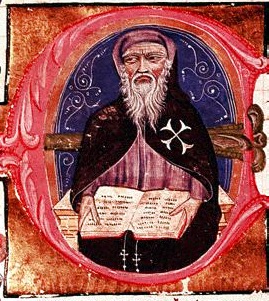 W
WJuan Fernández de Heredia was a Spanish knight of Aragon who served as Grand Master of the Knights Hospitaller from 24 September 1377 to his death. His tenure was occupied by the "affair of Achaea", the persistent, but ultimately fruitless, efforts by the Knights to acquire the Principality of Achaea in southern Greece. He was also a great patron of the translation and composition of historiographical works in the Aragonese language and a counsellor to two Kings of Aragon.
 W
WJames II, called the Just, was the King of Aragon and Valencia and Count of Barcelona from 1291 to 1327. He was also the King of Sicily from 1285 to 1295 and the King of Majorca from 1291 to 1298. From 1297 he was nominally the King of Sardinia and Corsica, but he only acquired the island of Sardinia by conquest in 1324. His full title for the last three decades of his reign was "James, by the grace of God, king of Aragon, Valencia, Sardinia and Corsica, and count of Barcelona".
 W
WGiuliano di Lorenzo de' Medici KG was an Italian nobleman, the third son of Lorenzo the Magnificent, and a ruler of Florence.
 W
WLorenzo di Piero de' Medici was the ruler of Florence from 1516 until his death in 1519. He was also Duke of Urbino during the same period. His daughter Catherine de' Medici became Queen Consort of France, while his illegitimate son, Alessandro de' Medici, became the first Duke of Florence.
 W
WLivio Odescalchi, Duke of Bracciano, Ceri and Sirmium, was an Italian nobleman of the Odescalchi family.
 W
WAntonio Ottoboni (1646–1720) was a Neapolitan general, nephew of Pope Alexander VIII and the father of Cardinal Pietro Ottoboni.
 W
WPhilip VI, called the Fortunate and of Valois, was the first King of France from the House of Valois, reigning from 1328 until his death in 1350.
 W
WNiccolò Piccinino was an Italian condottiero.
 W
WNiccolò di Pitigliano (1442–1510) was an Italian condottiero best known as the Captain-General of the Venetians during the Most Serene Republic's war against the League of Cambrai. He was a member of the powerful feudal family of the Orsini, belonging to its Pitigliano line.
 W
WGirolamo Riario was Lord of Imola and Forlì. He served as Captain General of the Church under his uncle Pope Sixtus IV. He took part in the 1478 Pazzi Conspiracy against the Medici, and was assassinated 10 years later by members of the Forlivese Orsi family.
 W
WLudovico Trevisan was an Italian catholic prelate, who was the Chamberlain of the Apostolic Camera, Patriarch of Aquileia and Captain General of the Church. He succeeded his rival Giovanni Vitelleschi, a fellow cardinal of military talent and inclination, as bishop of Traù and metropolitan bishop of Florence. Trevisan was also known as the Cardinal of Aquileia and the Cardinal Camerlengo.